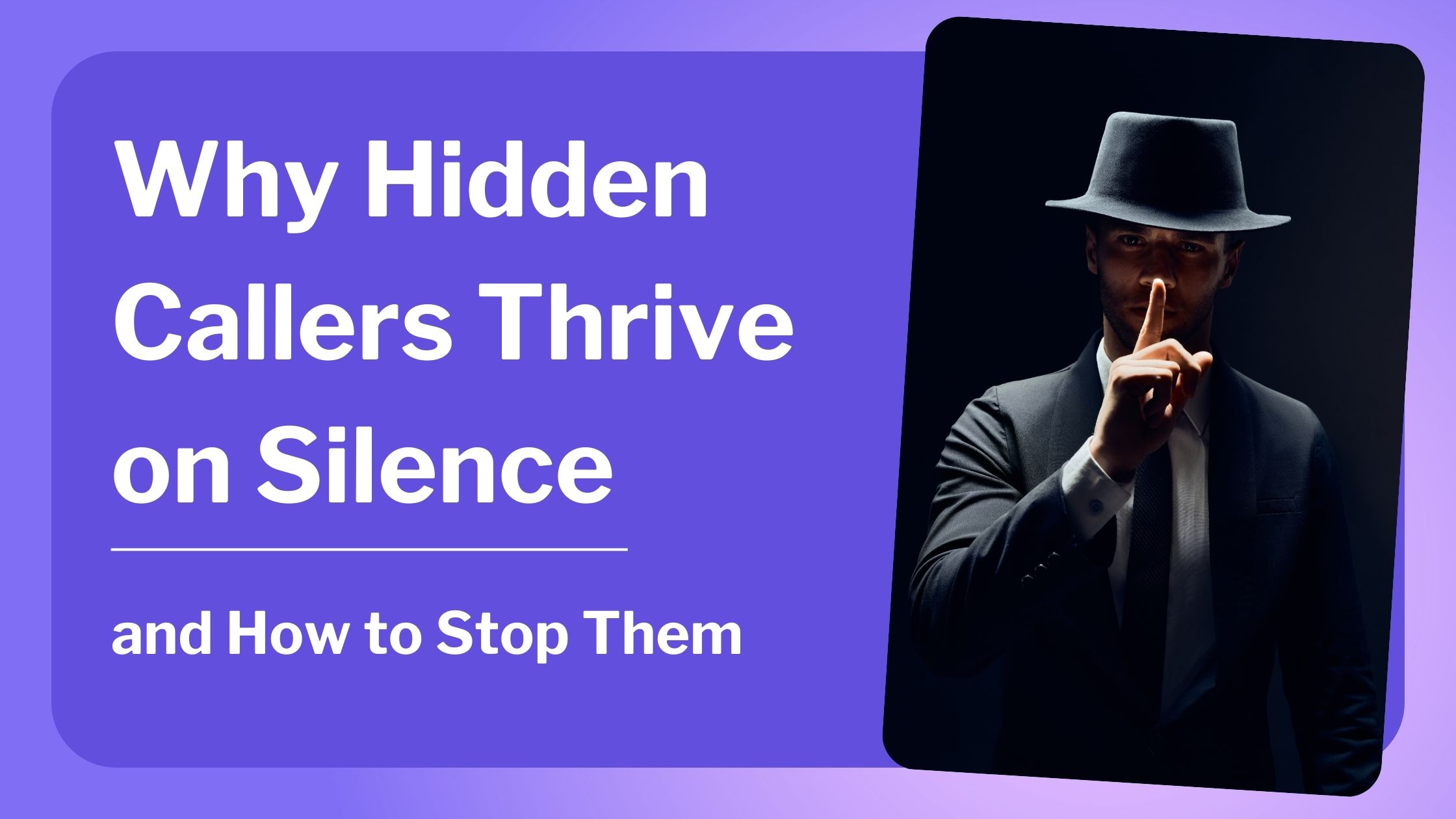
Published 08/31/25
Silence Isn’t Safety—It’s Strategy (for Them)
There’s a reason hidden callers show up as “No Caller ID.”
It’s not an accident. It’s a tactic.
They rely on silence—yours, your phone’s, and the system’s. The less you know, the more control they have. Whether it’s a spammer trying to fish for info or a harasser hoping you’ll pick up, anonymity gives them the upper hand.
But only if you let it.
In this post, we’ll break down how hidden callers use silence as a weapon—and what you can do to stop playing by their rules.
What Hidden Callers Are Really After
Every unknown or hidden call has a purpose, even if it’s not obvious. These tactics often signal:
Avoiding detection (exes, stalkers, or harassers)
Bypassing blocks (especially if you’ve blocked them already)
Scam preparation (testing if your number is active)
Emotional manipulation (a classic move in toxic relationships)
If you’ve received these types of calls more than once, know this: they’re not random. They’re designed to provoke a reaction—or exploit your lack of one.
Why Ignoring Isn’t Enough
It’s tempting to ignore hidden calls and hope they stop.
But here’s the issue:
Ignoring confirms your number is real and in use
Some harassers escalate when they’re ignored
You're left with no info, no record, and no strategy
Silence only works when paired with action. And that starts with identification.
Step 1: Unmask the Hidden Caller
This is where the power shift begins.
With iCaughtYou, you can unmask who’s behind a “No Caller ID” call—instantly. No gimmicks. No loopholes. Just clarity.
Once you know who’s calling, you get to choose how to respond:
Block them
Blacklist them
Report them
Either way, you’re no longer in the dark.
You can’t protect your peace if you don’t know who’s disturbing it.
Step 2: Blacklist Repeat Offenders
One hidden call? Maybe a glitch.
Two or more? That’s a pattern.
Use iCaughtYou’s blacklist feature to cut off repeat violators—even if they try again using different numbers or blocked status. It’s the digital equivalent of a restraining order for your phone.
And once they’re on the list, they’re out for good.
Step 3: Don’t Fall Into the Callback Trap
Many hidden callers bank on your curiosity. They want you to call back, open the door, or engage just once.
Don’t.
Never call back a hidden number
Never press buttons during an unknown call (it confirms your number is active)
Never share personal info—even if the voice on the other end sounds “official”
Instead, record, research, and report.
Step 4: Report and Document the Behavior
If the call content was threatening, abusive, or persistent, use iCaughtYou to:
Record and store the call safely
Note the time, frequency, and behavior
Compile this into a timeline, especially if it escalates
Then, report to:
The FCC or FTC
Your phone provider
Local law enforcement if the call feels dangerous
Harassment thrives when it’s undocumented. Your records help shut it down.
Step 5: Build an Always-Protected Phone Space
You don’t need to be reactive. You can build a proactive system:
Use Do Not Disturb to silence non-contacts
Silence unknown callers via device settings
Let iCaughtYou run in the background to catch anything that slips through
This turns your phone from an open door into a safe zone—with the freedom to answer only what you choose.
Silence Is Power—When It’s Yours to Control
When hidden callers reach out, they’re counting on you not to know what to do. They rely on the gaps: no caller ID, no recording, no resistance.
But with tools like iCaughtYou, you flip the script.
You unmask them. You blacklist them. You own your digital space.
Because protecting your phone isn’t about paranoia—it’s about peace.
Ready to End the Silence?
Download iCaughtYou and start setting boundaries that stick. Explore more at iCaughtYou.com
Explore more at iCaughtYou.com
Further Reading
Unknown Number Calling? Here’s What to Do – From our blog